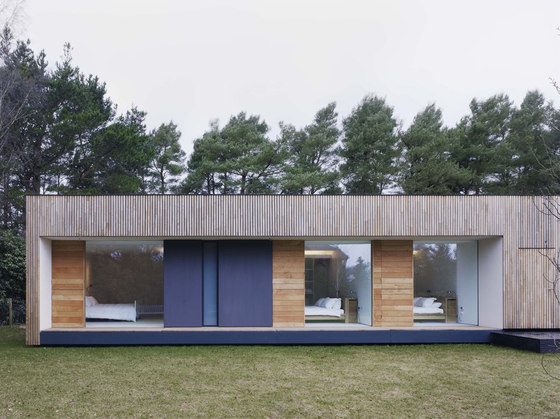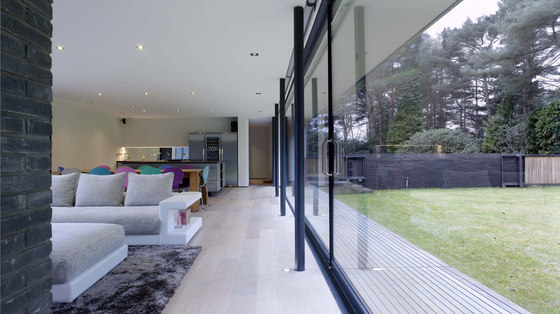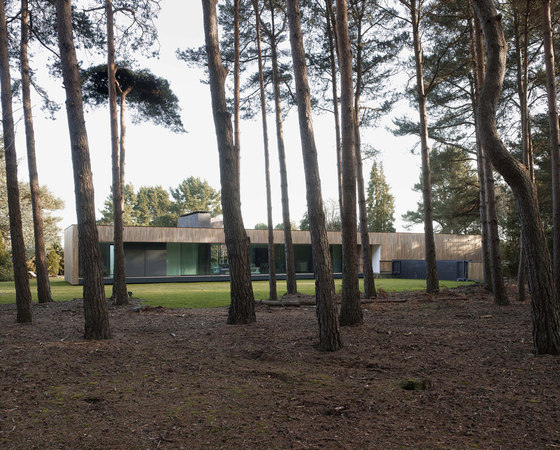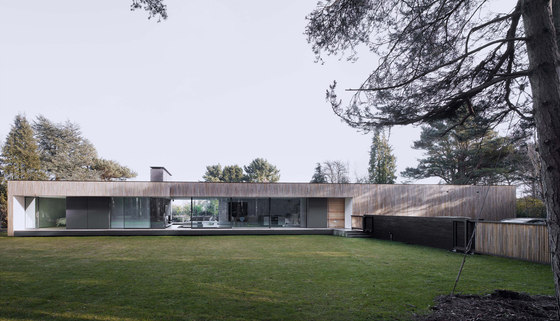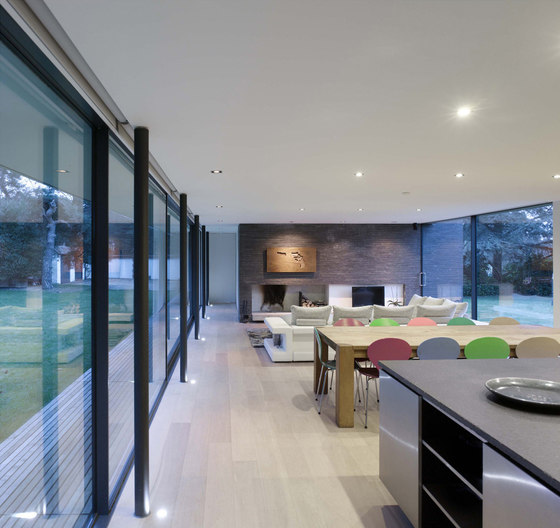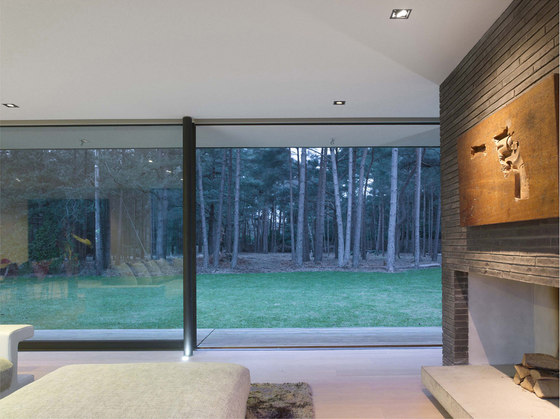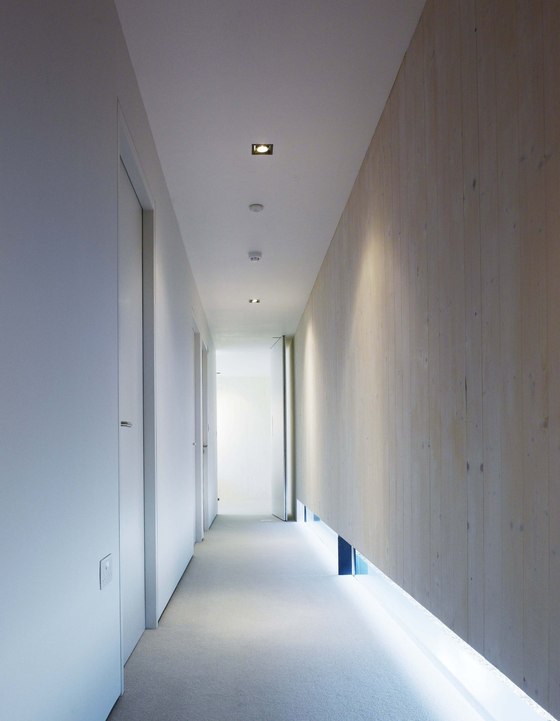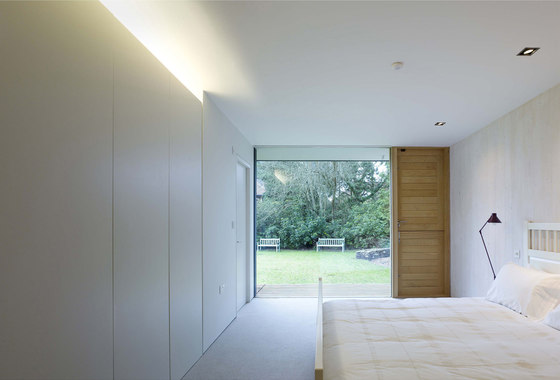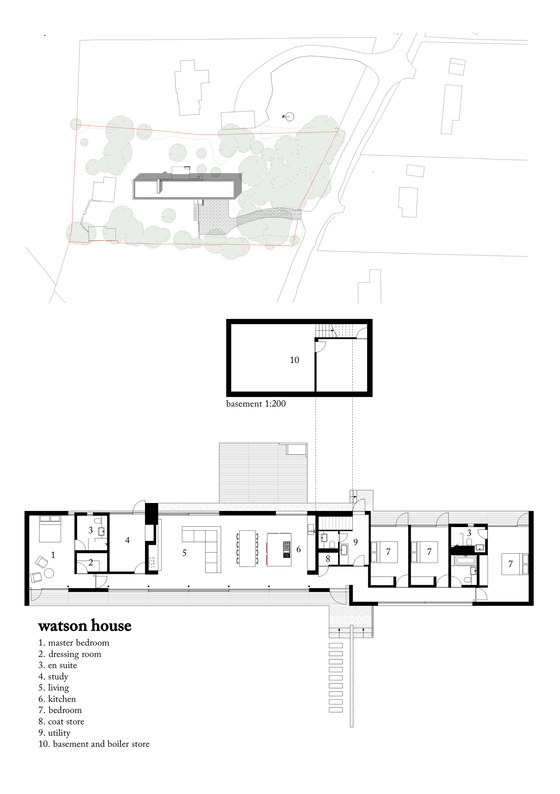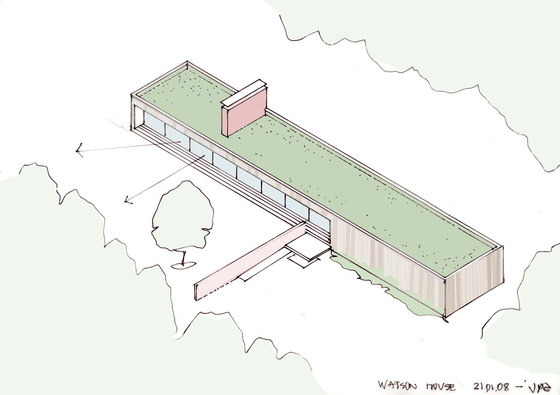The brief began with the idea of occupying the house for short breaks – a holiday home that is easy to use and the clients wished to live in contact with nature. They wanted a house that offered the opposite to their day to day urban life – a place that breathed, that was open, light, easy to maintain and interacted with the garden and woodland.
The brief was clear that the parents wanted to have space between their two teenage children’s bedrooms and their own and also provide a room for guests, but a single social space for cooking, eating and relaxing together.
The site sits within the New Forest National Park that was established in 2006. As a new authority, it adopted very stringent planning guidelines that made our proposal sit at odds with their idea of the built heritage of the New Forest. The application met with a refusal on the basis that it ‘would not reflect the built character of the New Forest National Park’. The application was won on appeal as we argued that the setting was such that the house would be literally hidden from public view and that there was no such thing as a ‘New Forest vernacular’ – the Inspector agreed that the design would have no impact on the Forest setting and that ‘the architectural quality of the proposed development and its suitability for the site would ensure that it would make a more positive contribution to the character and appearance of the area’.
The design was the result of the idea of a simple linear single-storey form that ‘touched the earth lightly’. Two linear concrete foundations ran along each side of the house (with a basement in the central section) and these supported laminated timber floor, wall and roof panels from KLH timber. The panels, craned over the trees from the road, were erected in less that one week and slender steel columns were employed to support the 15 metre long opening facing onto the woodland. The design tolerances of this system allowed for windows to be pre-ordered and this in turn allowed the house to be weather-tight in a matter of weeks.
The house was clad externally with rigid insulation and a rainscreen of open jointed, sweet chestnut slats over a black mesh.
Initial budget estimate was established by a QS cost plan at £634,000. Final account was £640,000.00. The main difference in cost was the adoption of Peterson Kolumba bricks for the central fireplace, which the client wanted at our recommendation.
The main approach in terms of performance on this building was to maximize the passive energy strategies, so the external envelope is highly insulated, with floor, walls and roofs achieving U values in the range of 0.12 to 0.19. Windows, although fairly extensive, are 16mm argon filled double glazed and achieve U values of 1.24. Total fabric loses are 208W/K. Ventilation is achieved through trickle vents.
Heating is provided through a gas condensing boiler providing primary energy of 37.90 kWh/year (147 kWh/m2/year). At the heart of the house lies a large chimney structure with an open fire to burn logs from the woodland on site – this is ‘hearth as home’. The project commenced in August 2009 with an 11 month programme. The main contractor went into administration in June 2010 and direct labour completed the project without incurring additional cost (to) the client and completion was achieved by September 2010, two months late.
Charles + Fiona Watson
Project architect: Henry Goss
Structural engineers: Ramboll
Sustainability consultants: IsoEnergy
Fenestration: Fineline


